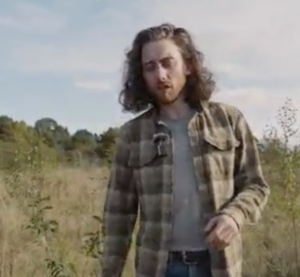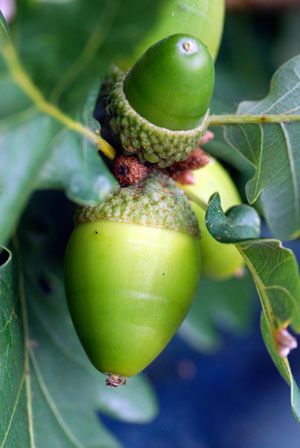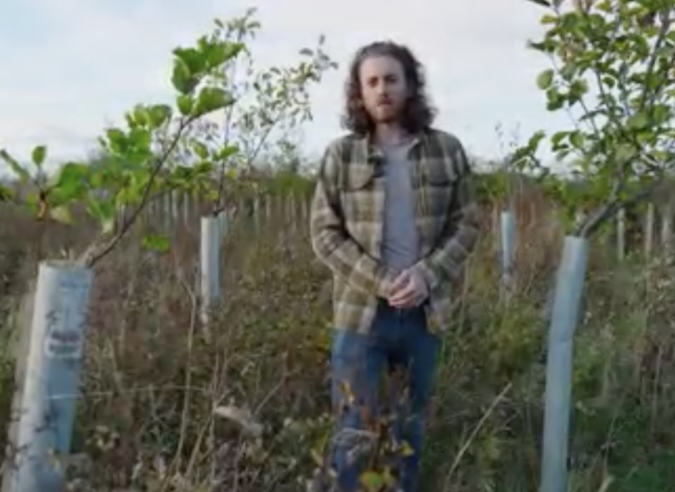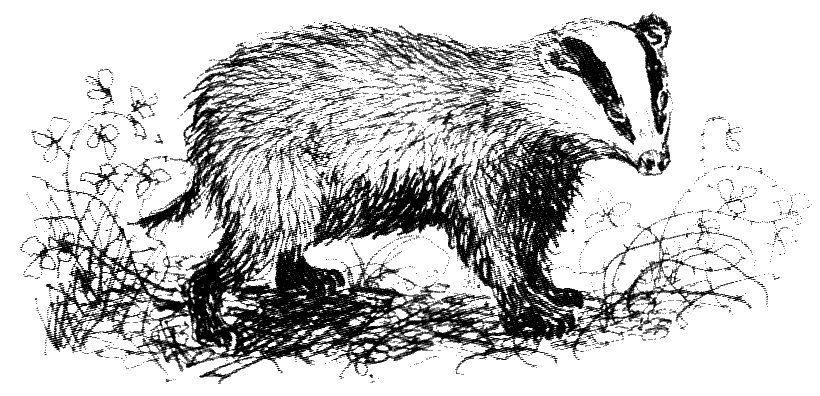Tree planting vs Natural Regeneration? And a film

Woodlands TV has just released another film, which discusses the pros and cons of tree planting in an area, as opposed to allowing natural regeneration.
Many years ago, Kenneth Mellanby [Director of a Research Station near Huntingdon] thought that it would be interesting to watch what happened to a barley field if it was left to its own devices. The 4 acre field was ploughed for a final time in 1961 and then ‘abandoned’. The field sat next to an area of ancient woodland - Monks Wood.
The changes in the field were monitored in succeeding years and eventually becoming known as the Monks Wood Wilderness Project. In the first 10 to 15 years, a thorny scrubland developed with hawthorn and bramble. Birds were attracted by their fruits and berries. The birds dispersed the seeds of the fruits across the plot, and also brought in seeds from other areas (such as the adjacent woodland). The bramble and hawthorn scrub afforded protection from the wind and herbivores [rabbits, deer etc] for young, delicate tree seedlings. Wind blown seeds arrived in the area, such as ash and field maple. Other tree seeds were deposited by birds, Oak began to grow. Acorns were probably carried in by Jays, who bury them as a winter food store. An acorn is a rich food source - containing  fat, carbohydrates, proteins and micronutrients. A single jay can scatter many hundreds of acorns each year. They store more than they need, so some will germinate and grow on to saplings. Whilst many different birds spread tree and shrub seeds, jays have been known to carry acorns significant distances and probably contributed to the northward spread of the Oak as the glaciers of the last Ice Age retreated. A mature oak tree can provide food and / or a home for many species of animals, plants and fungi.
fat, carbohydrates, proteins and micronutrients. A single jay can scatter many hundreds of acorns each year. They store more than they need, so some will germinate and grow on to saplings. Whilst many different birds spread tree and shrub seeds, jays have been known to carry acorns significant distances and probably contributed to the northward spread of the Oak as the glaciers of the last Ice Age retreated. A mature oak tree can provide food and / or a home for many species of animals, plants and fungi.
The former barley field has been monitored over the decades, and by 2014 it had become an oak woodland. This despite the usual depredations of Rabbits, Hares, Muntjac Deer and Roe Deer which have been present at various times over the years. So given time, former agricultural land can revert (rewind) to mixed deciduous woodland with a diverse collection of plants and animals. For further details of Monks Wood - visit https://www.naturewalkswithcarol.com/monks-wood-nature-reserve.html
The woodlands TV film features ecologist Connor McKinnie who highlights key factors to consider when planning woodland creation, such as tree protection methods, planting pattern, and species.

This is the second film with Connor, exploring aspects of rewilding. The first film is presented below :
The latest film may be viewed on YouTube by following this link : https://youtu.be/Qx7uiOlGjFY
Comments are closed for this post.

Active rewording is being botched in my opinion..once the trees are established then deer fences should be removed to allow wildlife back in. The fences stay up until they fall down trapping deer in them phydically and also imprisoning them in the area as they can’t find the way out. Does no one else have concerns about this, it’s ridiculous that the countryside is littered with falling down fences.
Angela
17 January, 2025